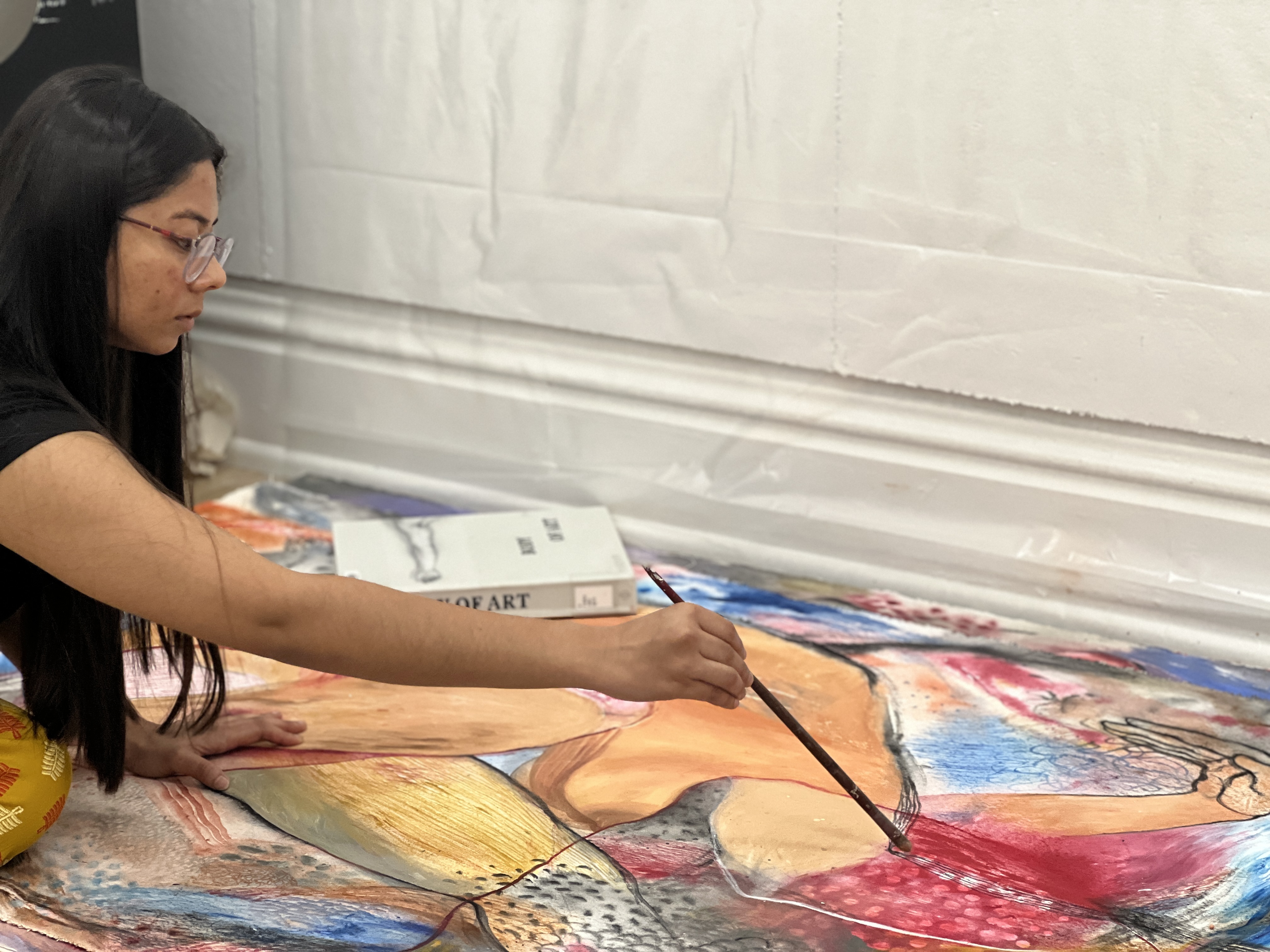Bio

Debanjaly Sen, originally from Kolkata, India, is currently based in Tuscaloosa, AL, USA. She is currently working as an adjunct instructor at the University of Alabama. She has received her second MFA in Painting along with a certificate in Museum Studies from The University of Alabama. Her solo MFA thesis show was featured at the Sarah Moody Gallery of Art at UA. Sen's work has been showcased at venues such as the Alabama A&M University Gallery, Koehnline Museum of Art, Bells Gallery, the Southern Studies Conference at Auburn University, Abir Space Gallery in Gujarat, Studio 2500 Gallery, and the University of Alabama Gallery, as well as numerous art festivals. She has been featured in Collect Art’s 101 Contemporary Artists and More, vol. 3, and her profile appears in The Penn Journal of Arts and Sciences (PJAS) Summer Issue.
Artist Statement
The representation of the female body holds profound significance across various contexts. My artistic practice addresses this complexity by regarding the female form as a locus of cultural, historical, and personal importance—challenging its objectification and reclaiming it as a symbol of resilience, transformation, and empowerment. By engaging with the female form in my work, I navigate these layers of meaning, questioning and redefining how women’s bodies are perceived and represented through the blend of Shakti and Western concepts. In Hindu philosophy, Shakti is the Eastern ideology of divine feminine energy.
Rooted in my Indian heritage and shaped by my experiences in the United States, my work transcends geographical and cultural boundaries to explore the collective struggles and triumphs of women. I draw upon traditional art forms such as Kalighat painting, Indian miniature painting, and Japanese woodblock prints, which offer rich historical contexts for examining the shifting roles of women and their representation. Kalighat paintings, with their vibrant colors and bold contour lines, inspire their aesthetic qualities and their ability to depict women as active agents during times of significant social transformation. Similarly, Japanese woodblock prints' dynamic cropping and intricate linework influence my compositions, enabling a nuanced interplay of form and ground. Moreover, my work engages with mythological narratives to bridge cultural divides and foster a deeper understanding of feminine resilience. Figures like Kali, Chinnamasta Devi, and Medusa inspire my reinterpretations of female power.
My work embodies a process-oriented approach that integrates traditional and contemporary techniques. Bold lines, vibrant colors, and layered compositions illustrate the tension between inner turmoil and exterior consciousness. I often use vibrant colors, particularly dominant red hues, symbolizing energy and powerful emotions. Layers serve as metaphors for the intersection of cultural beliefs and personal experiences, while stains capture the residues of memory and the lingering effects of trauma, resilience, and healing. Through techniques such as scraping, staining, layering, and mark-making, I engage with the surface as a living entity, creating a space where personal and collective histories intertwine.